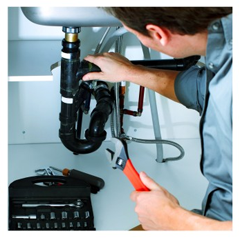Plumbing pipes come in a wide array of types that can cater to the needs and demands of any home. Different materials have different pros and cons in terms of cost, environment friendliness, and overall function. Below is a short guide for choosing the right pipes that will suit your needs:
-
Copper Pipes
Plumbers have been using this material for almost four decades not just in residential spaces but also in industrial ones. Original lines are still working to this day making this material a premium choice.
One of the caveats of copper pipes is that while they will not contaminate the water that passes through it and old pipes can be recycled, these can be hardly considered as green products since copper mining and manufacturing damages the environment in many ways.
In addition, copper prices are quite steep since it is a globally traded commodity which can bring prices up to $285 for every 100 feet of material.
-
Cross-linked Polyethylene (PEX)
This material is notable for its ability to withstand tricky retrofits with very little need for seams. Moreover, soldering is not required for areas that need joints. It is also relatively cheap for $30 for every 100 feet.
However, this material is put under scrutiny since the process to make this pipe involves a toxin found in gasoline which environments think would contaminate water that passes through these pipes. However, recent iterations of this material have already been deemed safer than the first generation ones released in the market a few decades ago.
-
Chlorinated polyvinyl chloride (CPVC)
The additional chlorine in this pipe makes it ideal for use with drinking water. Moreover, it is the perfect material for use among home handymen since no special tools and processes are required to install these at home.
CPVC, however, is not a green product since manufacturing it releases pollutants into the environment. It is also not recyclable and joining pipes together requires volatile chemical solvents. The only upside is that once installed, it does not pose any health risks for water quality.
This material costs $50 for every 100 meters.
-
Polypropylene pipe (PP)
In Europe, this material is considered the best option for going green in terms of plumbing pipes. It is both durable and safe since it is not joined by chemicals but rather by heat to melt and fuse parts together.
This is quite tricky to install for home DIYers since it requires special tools but professionals will hardly have any issues with it.
It is sold for $110 for every 100 meters.


